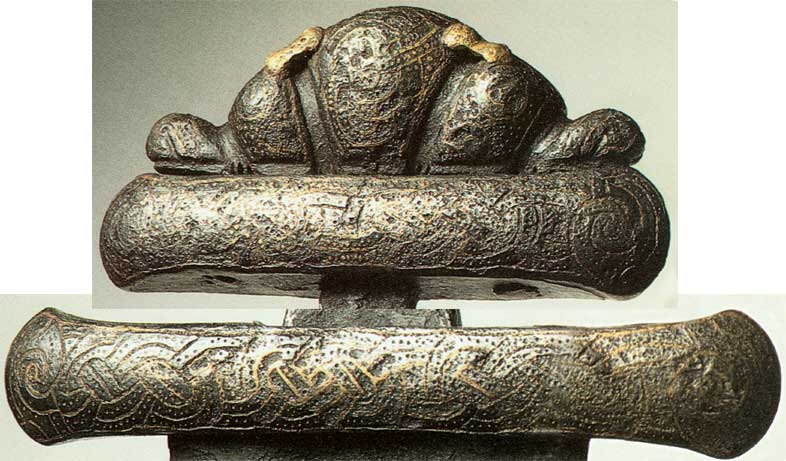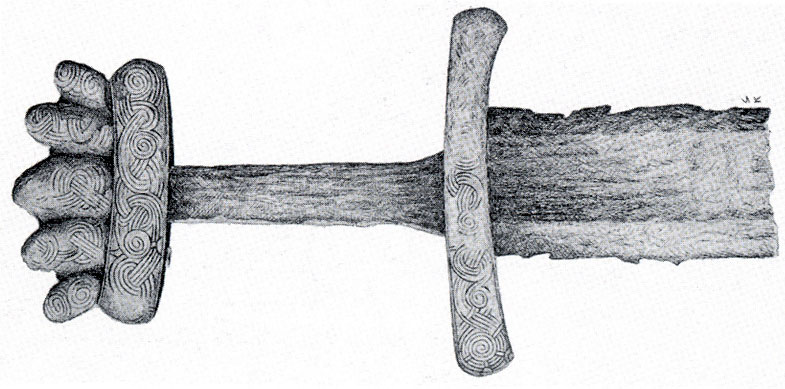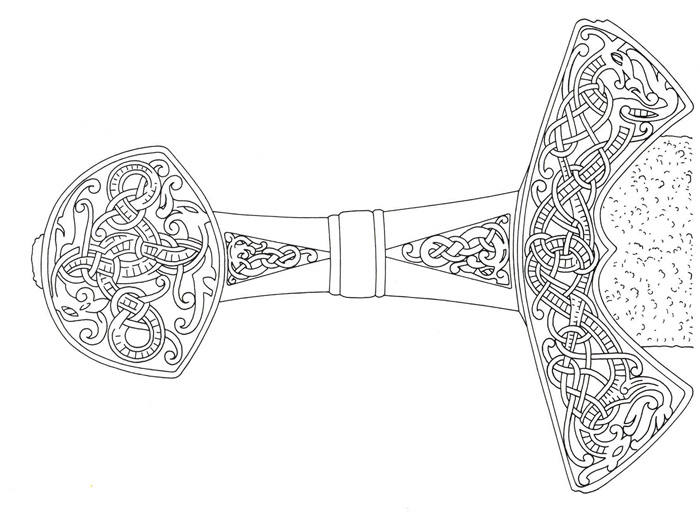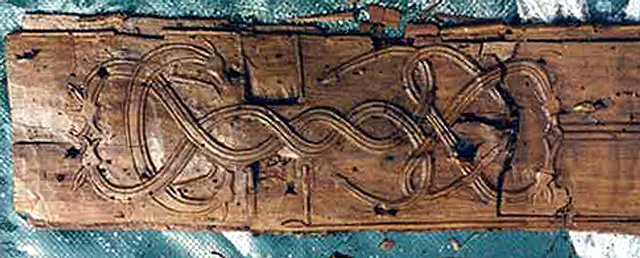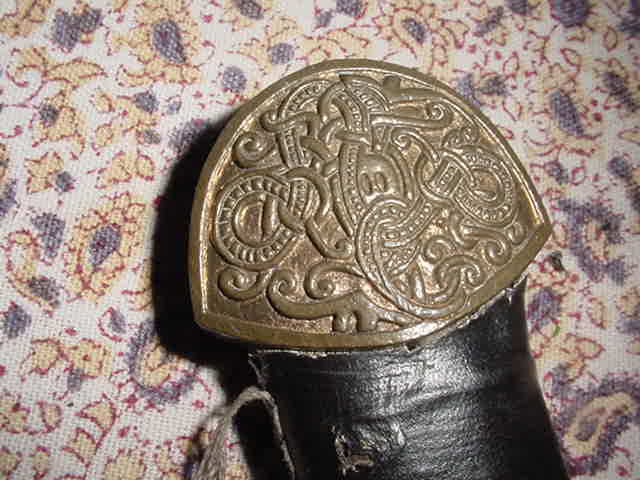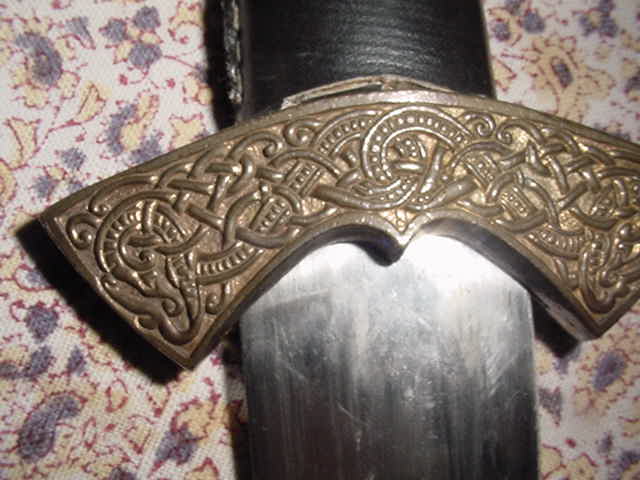[ Linked Image ]
I feel it could fit into two different styles - Borre and Jelling. I was hoping for clarification, and, better yet, additional examples of the style.
Here are the details of each:
The identifying elements of the Borre style include:
- - 875-950 AD
- Gripping beasts refined from Broa/Oseberg. The animals in Borre ornament are a mixture of ribbon-shaped animals and gripping beasts. These animals typically have polygonal hips, four legs, a ribbon body that is often knotted in a circular design, and a triangular, mask-like head shown face-on to the viewer, with bulging eyes and big ears. Animal bodies often a grooved or hatched pattern on the body, combined with smooth, polished heads and legs.
- Knotwork becomes very important in the Borre style, with not only animals showing knotted ribbon-like bodies, but also knotted ribbons by themselves, or in plant motifs (acanthus and vine designs) that are thought to have been copied from imported Frankish trefoil and tongue-shaped mounts ca. 900. Knots are often in a pattern heralds term a "Stafford knot," which most people will recognize as a "pretzel knot."
- Another knotted motif that is a hallmark of the Borre style is the ring-chain pattern. This is a knotted pattern made up of a double ribbon plait forming a symmetrical interlace. Each intersection is bound by a circle which surrounds a hollow-sided lozenge. This pattern is perhaps best-known from the carved stone crosses on the Isle of Man: it is one of the most common motifs found on the Manx crosses, and often referred to as "Gaut's ring-chain" from the heavy use of this motif on a cross carved by Gaut Björnsson. In many instances a ring-chain design will end in stylized animal masks.
The identifying elements of the Jelling style include:
- - 880-1000 AD
- Elongated, S-shaped animals, shown in profile, diagonally symmetrical and intertwined, with ribbon-like bodies without hips. Gripping beasts are not normally found (except in hybrid Borre-Jelling pieces). The bodies are frequently decorated with a hatch infill pattern, and are usually larger that the bodies of Borre animals.
- Some Jelling animals, most commonly on metalwork, have ribbon-shaped bodies with slits in the body, a motif which is thought to be a revival of Broa style ornament.
- Both types of animals often have open jaws and a folded upper lip, a long "pigtail" on the head, and small spiral hip joints.
- The Jelling style was introduced by Scandinavians into Britain and was used extensively by Anglo-Scandinavian carvers in Yorkshire.
(info from The Viking Answer Lady www.vikinganswerlady.com/wood.htm)
As the Borre and Jelling styles overlapped, there were hybrid pieces - engravings that incorporated elements of both. I'm leaning towards something like this for the tooling of the baldric for my scabbard.
